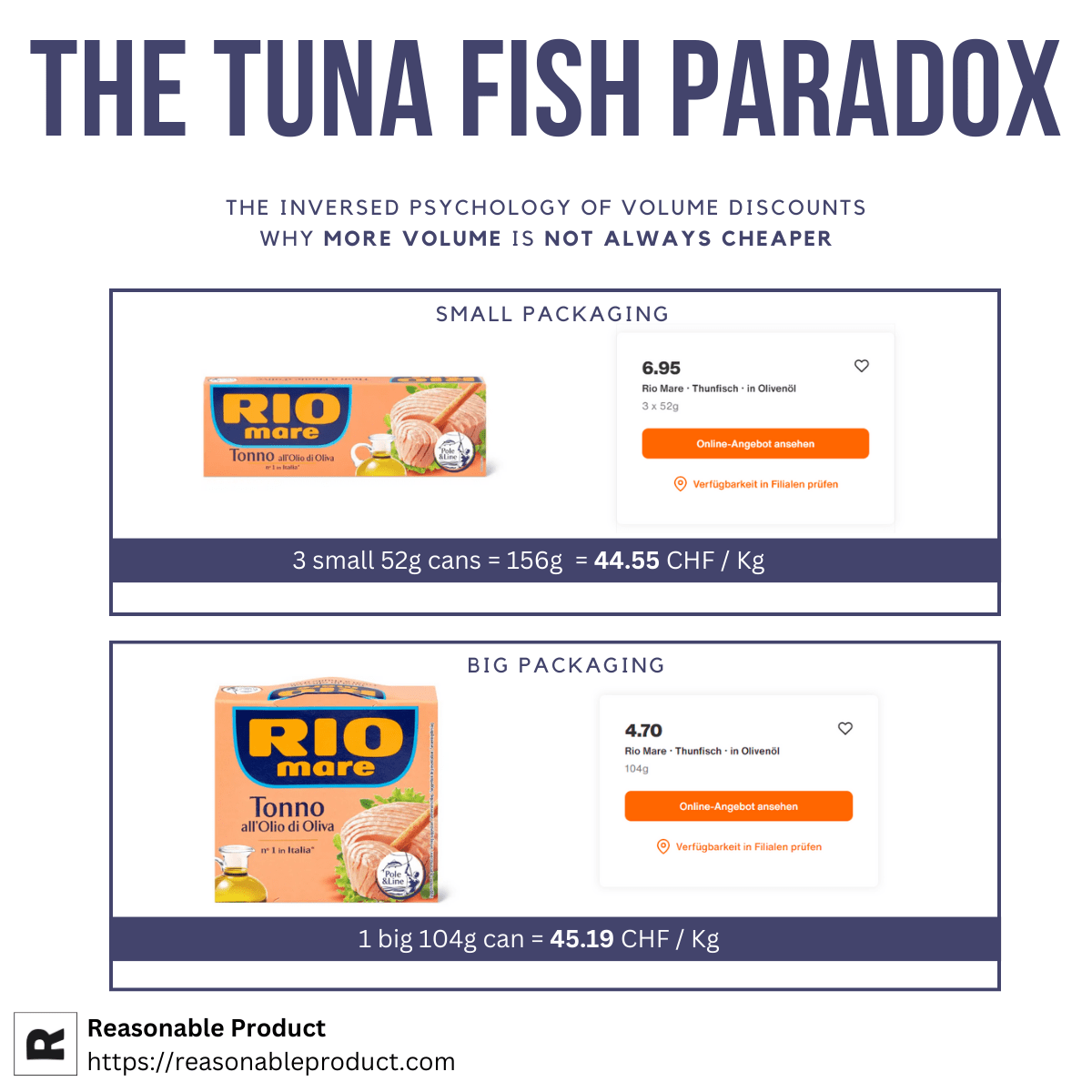The Tuna Fish Can Paradox
Does larger packaging always imply a discount or a lower price per unit? Not necessarily! 👇
Read the (real) story of how a major Swiss retailer prices their Tuna fish cans.
We are accustomed to instinctively believing that larger packages mean “paying less” (per unit). The basic idea is that if you buy a family pack, you’ll pay a bit more in absolute value, but in reality, the price per unit will be lower. That’s how supermarkets and similar retailers lure us with gigantic packages of chips or popcorn. Yummy!
The Theory:
So, why do we choose the “more expensive” options? When faced with multiple buying options for comparable goods (i.e., goods contributing to the same goal), we tend to optimize the incremental value. In other words, we instinctively examine the relative price increment (let’s call it “dP”) compared to the relative additional value (“dV”) we receive. If “dV” > “dP,” it means we’re getting a good deal, and we’ll prefer this one. This is typically the case with larger food packages (such as larger cans or bigger bottles). Of course, the same principle applies in other purchases, like choosing a better hotel room compared to the standard one or selecting from different plans for a SaaS service.
The Brain:
Back to our Tuna cans: do we always perform the calculations and determine the incremental value each time? Not really. Our brains are accustomed to this way of thinking, to the point that it becomes instinctual, a shortcut we take without further contemplation. We associate a “larger box” with a “better incremental value/price ratio.”. As a pricing or product manager, if you understand this, you can also use this to influence the choice.
The Reality:
However, upon closer inspection of reality, larger packaging does not always equate to being cheaper (per unit). This phenomenon is what I refer to as the “Tuna Fish Can Paradox,” derived from the example of canned tuna fish. In the example you see in this image, a very well known Swiss retail selling larger Tuna Fish Cans (104g) at a HIGHER price per Kg than the “small” 52g can.
The Moral:
✅ You’re not “obliged” to discount for volume. Always think about what makes sense.
✅ Apparently logical, does not mean that’s what you have to do
✅ Understanding how people percieve value is key
✅ If you’re the buyer, do the maths; don’t make assumptions. 😁

My name is Salva, I am a product exec and Senior Partner at Reasonable Product, a boutique Product Advisory Firm.
I write about product pricing, e-commerce/marketplaces, subscription models, and modern product organizations. I mainly engage and work in tech products, including SaaS, Marketplaces, and IoT (Hardware + Software).
My superpower is to move between ambiguity (as in creativity, innovation, opportunity, and ‘thinking out of the box’) and structure (as in ‘getting things done’ and getting real impact).
I am firmly convinced that you can help others only if you have lived the same challenges: I have been lucky enough to practice product leadership in companies of different sizes and with different product maturity. Doing product right is hard: I felt the pain myself and developed my methods to get to efficient product teams that produce meaningful work.

